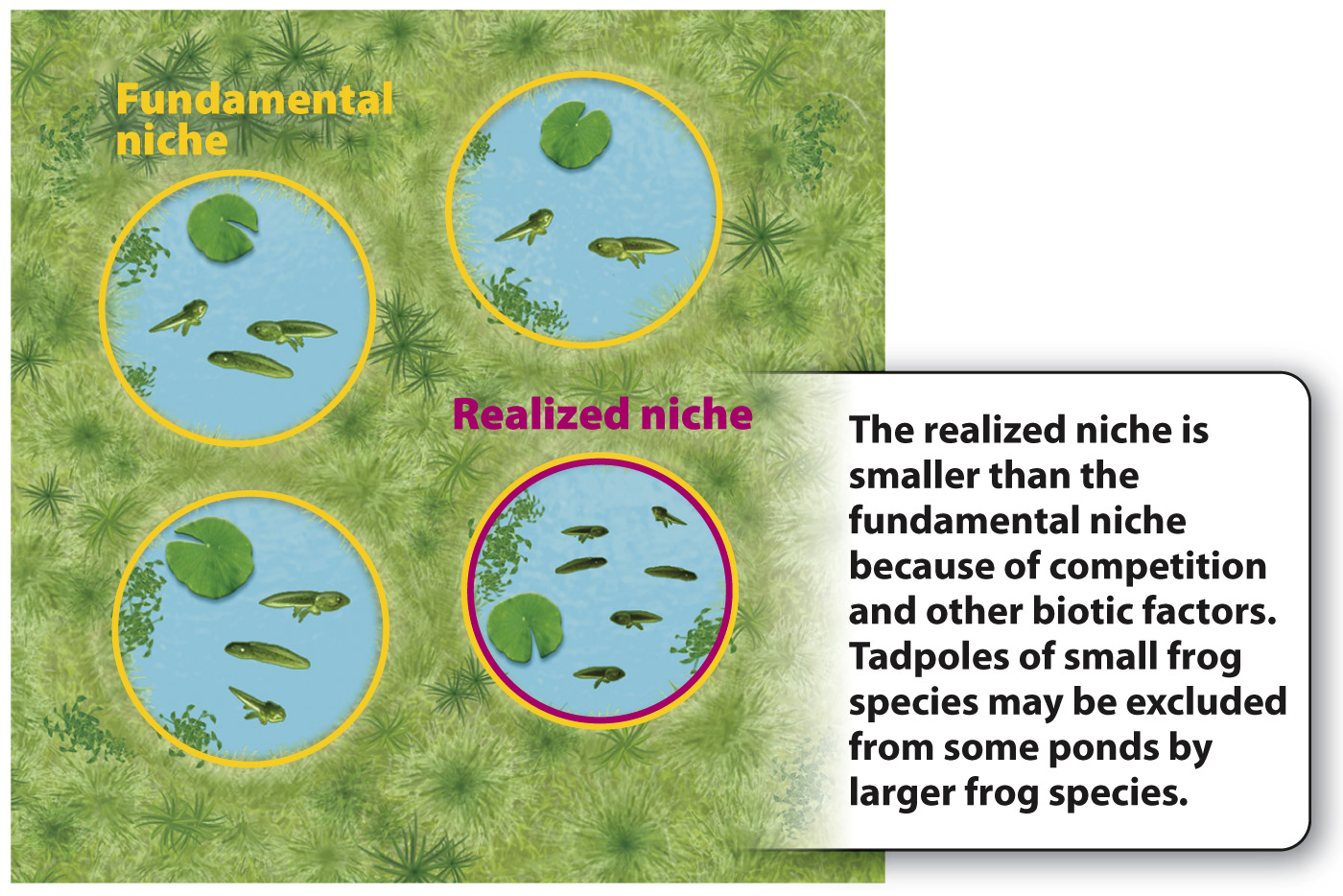The realized niche of a species is more restricted than its fundamental niche.
The fundamental niche includes the full range of climate conditions and food resources that permits the individuals in a species to live. In nature, however, many species do not occupy all the habitats permitted by their anatomy and physiology because of interactions with other species that can reduce the range actually occupied through competition or predation. This actual range of habitats occupied by a species is called its realized niche.
For example, tree frogs can reproduce in ponds near forests throughout eastern North America, their fundamental niche (Fig. 47.2). However, tree frogs are excluded from ponds that also have larger frogs because the larger frogs eat most of the algal food available, limiting the tree frogs’ realized niche to ponds without larger frogs (Fig. 47.2). Therefore, competition with other species can determine the size of the realized niche.

Quick Check 1 Which is larger—
Quick Check 1 Answer
The fundamental niche is larger than the realized niche because the fundamental niche represents all the habitats where a species could possibly live, but competition among different species usually restricts a species to a smaller area, which is the realized niche.